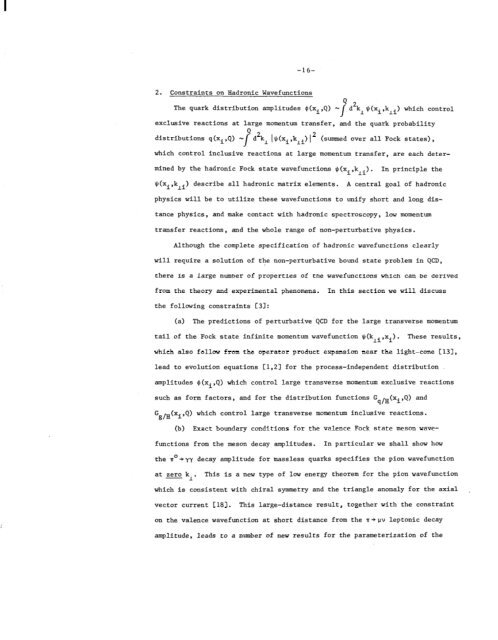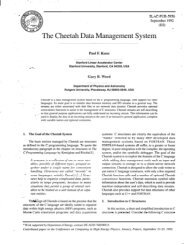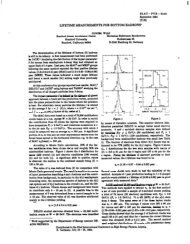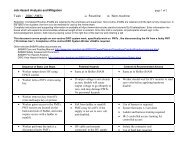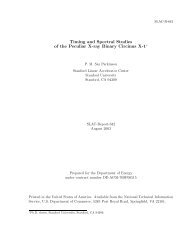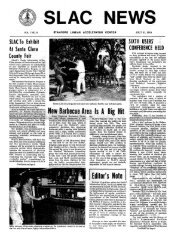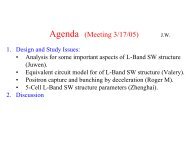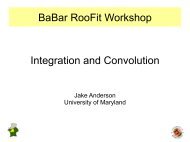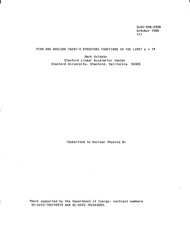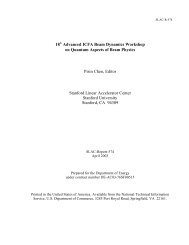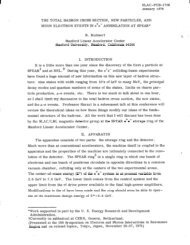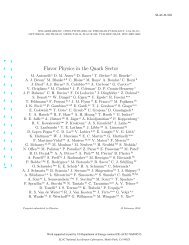slac-pub-2605 - SLAC - Stanford University
slac-pub-2605 - SLAC - Stanford University
slac-pub-2605 - SLAC - Stanford University
You also want an ePaper? Increase the reach of your titles
YUMPU automatically turns print PDFs into web optimized ePapers that Google loves.
2. Constraints on Hadronic Wavefunctions<br />
-16-<br />
The quark distribution amplitudes @(xi,Q)<br />
Q2<br />
-. / d kl Jl(Xi, kli) which control<br />
exclusive reactions at large momentum transfer, and the quark probability<br />
distributions q(xi,Q) ~~d2k~ I~(Xi,kli) I2 ( summed over all Fock states),<br />
which control inclusive reactions at large momentum transfer, are each deter-<br />
mined by the hadronic Fock state wavefunctions $(xi,kLi). In principle the<br />
Jib i,kLi) describe all hadronic matrix elements. A central goal of hadronic<br />
physics will be to utilize these wavefunctions to unify short and long dis-<br />
tance physics, and make contact with hadronic spectroscopy, low momentum<br />
transfer reactions, and the whole range of non-perturbative physics.<br />
Although the complete specification of hadronic wavefunctions clearly<br />
will require a solution of the non-perturbative bound state problem in QCD,<br />
there is a large number of properties of the wavefunctions which can be derived<br />
from the theory and experimental phenomena. In this section we will discuss<br />
the following constraints C3J:<br />
(a) The predictions of perturbative QCD for the large transverse momentum<br />
tail of the Fock state infinite momentum wavefunction $(kli,xi). These results,<br />
which also follow from the operator product expansion near the light-cone [131,<br />
lead to evolution equations Cl,21 for the process-independent distribution<br />
amplitudes $(xi,Q) which control large transverse momentum exclusive reactions<br />
such as form factors, and for the distribution functions G q,,(x,,Q> and<br />
G glH(xi,Q) which control large transverse momentum inclusive reactions.<br />
(b) Exact boundary conditions for the valence Fock state meson wave-<br />
functions from the meson decay amplitudes. In particular we shall show how<br />
the x"+yy decay amplitude for msssless quarks specifies the pion wavefunction<br />
at - zero k I. This is a new type of low energy theorem for the pion wavefunction<br />
which is consistent with chiral symmetry and the triangle anomaly for the axial<br />
vector current C181. This large-distance result, together with the constraint<br />
on the valence wavefunction at short distance from the r+uv leptonic decay<br />
amplitude, leads to a number of new results for the parameterization of the


